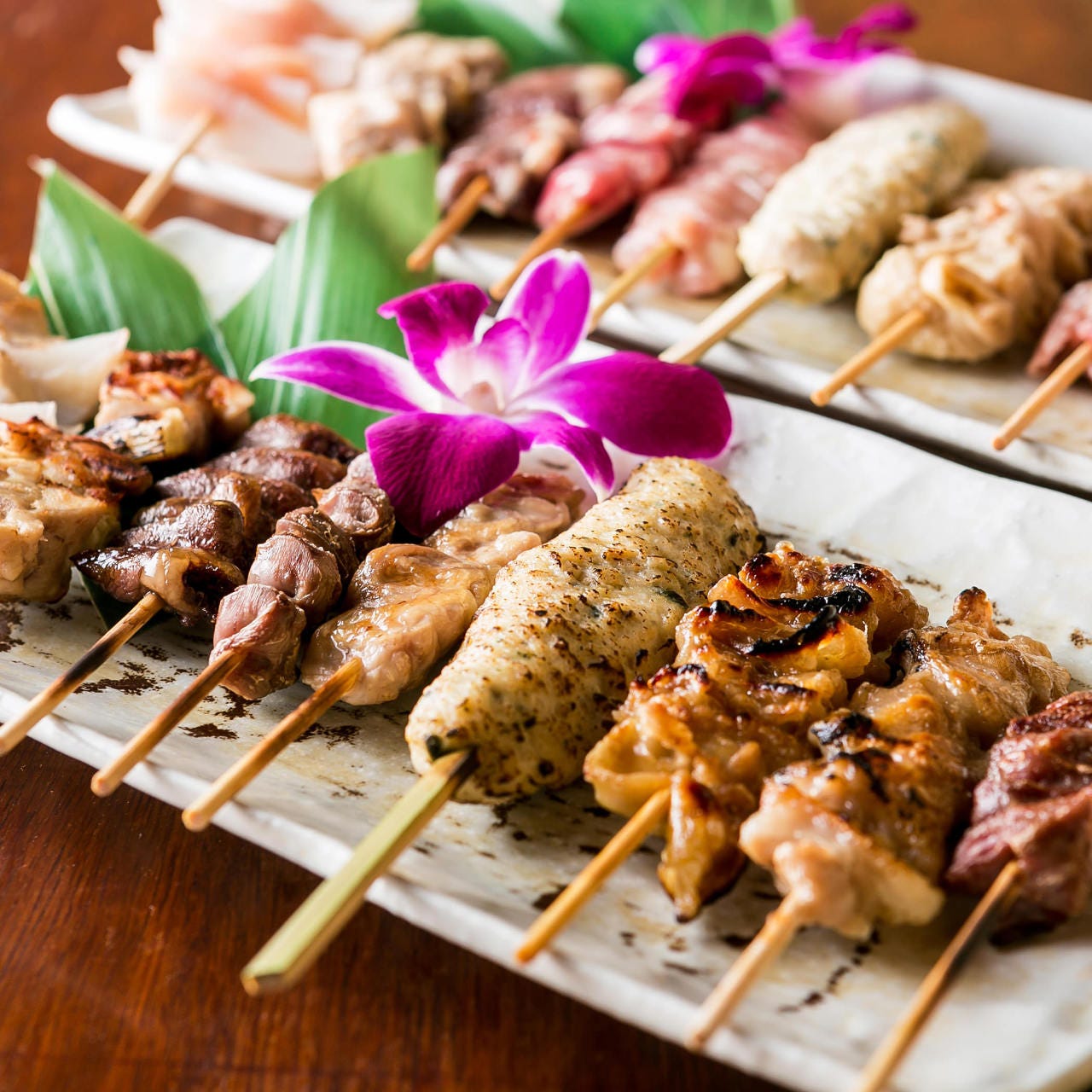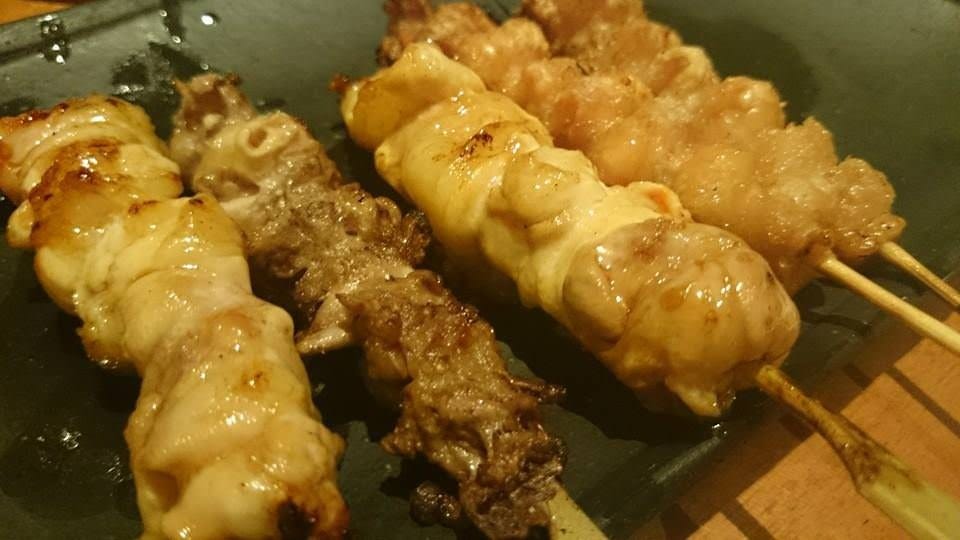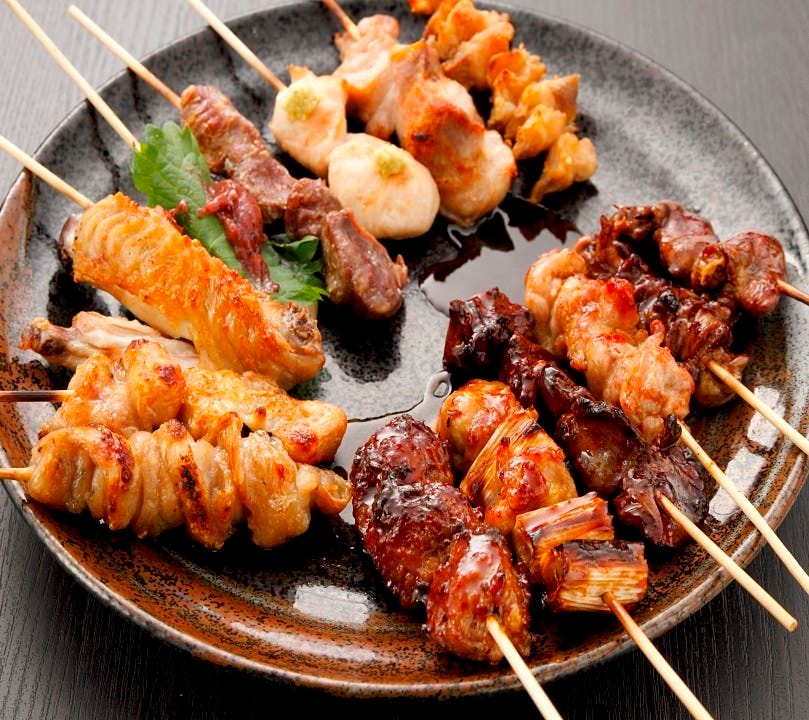
Even More Delicious! Yakitori Trivia to Enhance Your Enjoyment
Yakitori is popular in Japan as gourmet food for the masses. It is a standard menu item at izakaya restaurants, and there are many restaurants specializing in yakitori, so visitors to Japan are sure to come across it. So here is some information regarding yakitori.
This post may contain affiliate links. If you buy through them, we may earn a commission at no additional cost to you.
Yakitori Types and Cuts
Yakitori, which is made by grilling small pieces of chicken on skewers over open flame, is very popular in Japan and can be enjoyed at dedicated restaurants and izakaya, and even purchased in supermarkets and convenience stores. There are so many different types of yakitori, it can be a challenge to decide what to order. In this article, we start by introducing popular yakitori cuts and types.

Shoniku (Boneless Meat) - Momo, Mune
These are both standard yakitori cuts. Momo is thigh meat and is juicy, and mune is breast meat, which is lean and light. Some restaurants mix momo and mune meats.

Negima
Negima is a skewer of negi scallions and momo or mune in alternating order.

Sasami
Sasami is chicken tenders, a part of the breast, that is particularly lean and light. It is high in protein and low in calorie. It is often served with a sauce or topping, such as pickled plum or cheese.

Tsukune
Tsukune are balls of minced meat from the neck of the chicken, and are often eaten with a raw egg yolk.

Teba
Teba are chicken wings. They have crunchy skin and soft, juicy meat so you can enjoy different textures in one.

Seseri
Seseri is the meat around the neck. It is firm meat with a solid texture, and has just the right amount of fat.

Bonjiri
Bonjiri is the meat around the tailbone. It has a slightly springy texture and is covered by fat so it is rich and juicy.

Sunagimo
Sunagimo is the gizzard, and has a crunchy texture.

Liver
The liver is full of iron and has a viscous texture.

Hatsu
Hatsu is the heart and is distinguished by a chewy, springy texture.

Kawa
Kawa is skin, and at Japanese yakitori restaurants, it usually means the skin from the neck.

Nankotsu
Nankotsu is the cartilage at the end of the breast bone. It is distinguished by a crunchy texture, and is said to have the lowest calorie among all chicken parts.

With Salt or Sauce?
Yakitori is usually served either with "salt" or "tare" (sauce) flavors. Most restaurants change the flavoring depending on the cut, but some places use one or the other as the basic flavor for all cuts, with the option for customers to ask for changes. The "tare" is usually a slightly sweet sauce of soy sauce, sugar and other ingredients, while the "salt" flavor is simply salt, which draws out the natural flavors of the ingredients.
Cuts and Types Often Eaten with Sauce
Tsukune, liver, etc.

Cuts and Types Often Eaten with Salt
Sasami, kawa, sunagimo, etc.

Yakitori Beyond Chicken
Although yakitori is commonly made with chicken, many restaurants use a variety of different ingredients.

Fowl Other than Chicken
Quail, aigamo (cross between a mallard and duck), Shamo, etc.
Other Types of Meat
Pork, beef, horse meat, etc.
Others
Vegetables such as onion, potato, and shishito pepper. Seafood such as squid, shrimp and scallop.
Yakitori is better eaten on the skewer
Yakitori is usually grilled on the skewer and served as it is. They are on skewers not just for convenience, but are often cooked specifically so that they are tastier that way. For example, some restaurants make the top piece larger and more flavorful so that you are hit with the heft and flavors when you bite into it. Also, if you take the meat off the skewers, the juices and umami flavors that were locked in may seep out. So be sure to eat them on the skewers without taking each piece off.

Recommended Restaurants to Enjoy Yakitori
Now, we will introduce some yakitori restaurants to go to when you are traveling in Japan. This time, we focus on Tokyo, Osaka and Kyoto.
[Tokyo] Kyuemon
This is a restaurant in Shinjuku, Tokyo that specializes in chargrilled yakitori. The yakitori is made with a variety of domestic chicken, including the Awaodori brand chicken from Shikoku region. There is a wide selection of menu items, such as the Set of 5 Types of Yakitori (730 JPY (excl. tax)). There are foreign-language menus (English and Simplified Chinese) and staff who speak English and Chinese. The restaurant also accommodates dietary restrictions such as vegetarian and religious diets.

[Osaka] YAMATO
This is a restaurant in a convenient location just 4 minutes on foot from Kitashinchi Station in Osaka. It is a popular restaurant that has appeared in the Michelin Guide. The chicken used here includes Omi Shamo from Shiga Prefecture and Yamato Nikudori from Nara Prefecture. The kushiyaki grilled skewers are 300 JPY and up (incl. tax) for one. There are also a la carte items that go perfectly with sake.

[Kyoto] Torisei Sanjo Branch
This is a restaurant for yakitori and chicken cuisine operated by an established Kyoto sake brewery. It is crowded everyday with people coming to enjoy the fantastic cuisine and sake. The chicken used for the yakitori is the Kyoaka Jidori from Kyoto Prefecture and Tanbadori. Both chicken have fine grains and a wonderful texture, and are grilled carefully and aromatically. There is a wide selection of menu items, including the Yakitori - Kyoaka Jidori Momo-mi (200 JPY (excl. tax)). There are menus in English and Simplified Chinese.

Yakitori, fragrantly grilled, goes perfectly with drinks including cold beer. Be sure to try some if you are visiting Japan.
The information in this article is accurate at the time of publication.



